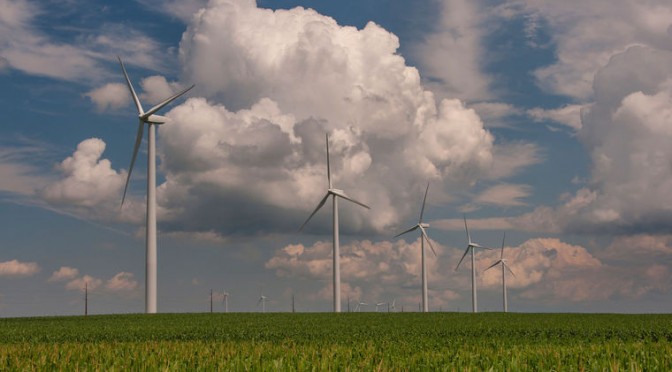Thanks to the early leadership of Gov. Terry Branstad, the state of Iowa has been committed to developing its wind energy resources for several decades. Why? It is simply good business.
Some may view that as an audacious statement, but Iowa’s commitment to wind energy has helped keep our state’s electricity rates the seventh lowest in the country, and 22 percent below the national average. Energy costs are often a major factor in economic development decisions because they are such a major line item for businesses. And access to renewable energy is increasingly cited as a contributing factor for where growing businesses like Google and Facebook choose to develop their data centers. That’s why our state’s wind energy resources are one of the first topics we discuss on economic development trips and our installed wind capacity has become an important recruitment tool for Iowa.
Iowa consumers, both corporate and residential, can expect to benefit from further savings in the coming years with additional investment in wind energy, according to a recent report from the Wind Energy Foundation and the American Wind Energy Association. Their report found that residential electric customers will save approximately $121 annually with an expected total savings from 2016-2040 of $3,200. Industrial customers, of course using more electricity, will see an expected savings of $31,200 in 2020 with a total savings from today until 2040 of $825,000. These cost savings are based on projections from the U.S. Department of Energy that expect wind power pricing to stay low, while the costs of traditional fuels are expected to rise.
The benefits of wind power development aren’t just limited to consumer savings. More than 6,000 Iowans are now employed within the wind industry. This includes jobs in manufacturing, operations and maintenance, and for design and engineering professionals. These Iowans have found employment in nearly a dozen manufacturing plants such as Sabre Industries in Sioux City that produces tower structures, or in one of the 75 additional companies that supply supportive products and services.
In addition, the local economic growth resulting from wind energy development is substantial. Iowa landowners receive approximately $17 million in annual lease payments, while the surrounding communities typically receive property taxes and other payments that help support infrastructure projects. Wind energy has accounted for at least $11.8 billion in capital investment throughout the state.
All of these numbers add up to positioning Iowa as a global leader in wind energy. We generated 31.3 percent of our electricity from wind energy last year, becoming the first state to surpass the 30 percent mark over an entire year.
But we aren’t done yet. In addition to wind project announcements by MidAmerican Energy and Alliant Energy, we are currently working on the Iowa Energy Plan, led by Lt. Gov. Kim Reynolds and in partnership with the Iowa Department of Transportation, which will be unveiled before the end of the year. The planning process has allowed us to reflect what has worked well for the state and gather stakeholder input about how the state can continue its renewable energy leadership.
Wind energy will be a vital part of the plan, as well as an important focus for Iowa. That’s why it is essential to continue building our state’s capacity to deliver renewable energy to companies and consumers, setting Iowa apart from the competition well into the future.
It just makes good business sense.
Debi Durham, former president of the Siouxland Chamber of Commerce, is currently director of the Iowa Economic Development Authority.
http://siouxcityjournal.com


